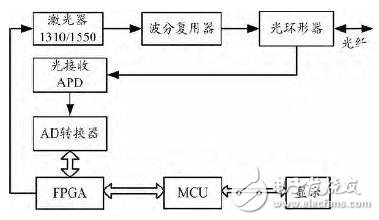As the optical communication industry continues to grow rapidly and fiber optic cables are widely deployed, ensuring comprehensive testing of optical networks has become a critical challenge for network operators. Two traditional testing methods have been commonly used: optical loss testing and OTDR (Optical Time Domain Reflectometry) testing. Optical loss testing involves using a light source and an optical power meter to measure the signal loss in a fiber link. This method is cost-effective and easy to operate, but it requires two technicians and lacks the ability to accurately locate faults or identify their root causes. On the other hand, OTDR testing can measure fiber length, attenuation, joint loss, and pinpoint fault locations with high precision and speed. However, interpreting OTDR results often depends on the operator's experience, making it difficult for less skilled personnel to achieve accurate results. As network complexity increases, these traditional techniques are no longer sufficient for fast, simple, and reliable testing. To address this, the industry has introduced intelligent testing technology based on OTDR principles, incorporating link sensing capabilities that allow for quick identification of fiber components, analysis of the link’s condition, and diagnosis of failures—without requiring specialized technical knowledge.
The core idea behind link-aware technology is built upon OTDR principles, but it enhances performance by performing multiple data acquisitions with different pulse widths. Short pulses are used to detect nearby sections of the fiber, while longer pulses help analyze the far end. These collected data sets are then merged and analyzed comprehensively to determine the composition of the fiber link, assess its condition, and diagnose any issues. Traditional OTDR testing typically uses a single pulse width, which can lead to limitations. For example, long pulse widths (over 320 ns) may cause information loss, making it hard to calculate connector attenuation accurately. Conversely, short pulse widths (under 80 ns) can capture fine details but struggle to penetrate beam splitters in PON networks, resulting in incomplete end-to-end loss measurements. Link sensing technology overcomes these challenges by combining the benefits of both long and short pulses, providing a more complete and accurate view of the fiber link’s status.
The implementation of intelligent optical network testing involves sending a specific optical pulse into the fiber and analyzing the backscattered and reflected signals to determine the link’s composition. Hardware components include a laser pulse transmitter, an optical signal receiver, and a signal acquisition circuit, while software handles data processing, analysis, and result visualization. The overall system architecture is illustrated in Figure 1.

Figure 1: Overall System Block Diagram
Typically, the laser operates at wavelengths of either 1310 nm or 1550 nm. The laser pulse transmission circuit is controlled by a high-speed FPGA, which generates precise pulse widths through strict timing control. It also adapts the laser’s output power based on the selected pulse width. The receiving optical path employs an APD photodetector to convert the received optical signal into an electrical signal, while a high-performance operational amplifier amplifies the signal without distortion, enhancing the signal-to-noise ratio. The data acquisition circuit uses a high-speed parallel ADC chip to ensure accurate sampling and spatial resolution. Additionally, the FPGA performs initial data processing, and the MCU conducts intelligent analysis of the collected data to determine the fiber link’s composition and condition effectively.
Rain Test Chamber,Tightness Testing Test Box,Waterproof Rating Test Chamber,Environmental Test Chamber
Wuxi Juxingyao Trading Co., Ltd , https://www.juxingyao.com